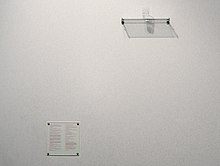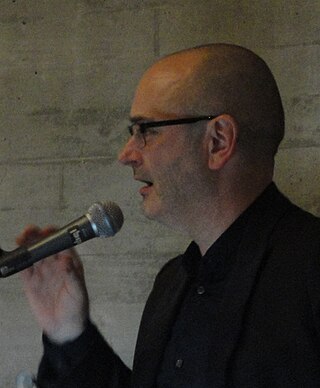
Douglas Gordon is a Scottish artist. He won the Turner Prize in 1996, the Premio 2000 at the 47th Venice Biennale in 1997 and the Hugo Boss Prize in 1998. He lives and works in Berlin, Germany.
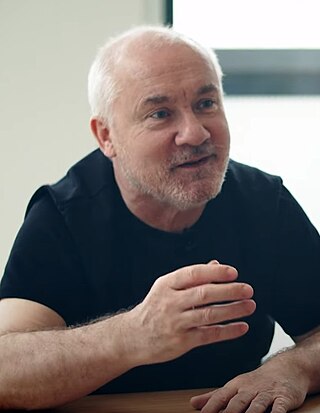
Damien Steven Hirst is an English artist and art collector. He is one of the Young British Artists (YBAs) who dominated the art scene in the UK during the 1990s. He is reportedly the United Kingdom's richest living artist, with his wealth estimated at US$384 million in the 2020 Sunday Times Rich List. During the 1990s his career was closely linked with the collector Charles Saatchi, but increasing frictions came to a head in 2003 and the relationship ended.

Milton Ernest "Robert" Rauschenberg was an American painter and graphic artist whose early works anticipated the Pop art movement. Rauschenberg is well known for his Combines (1954–1964), a group of artworks which incorporated everyday objects as art materials and which blurred the distinctions between painting and sculpture. Rauschenberg was primarily a painter and a sculptor, but he also worked with photography, printmaking, papermaking and performance.
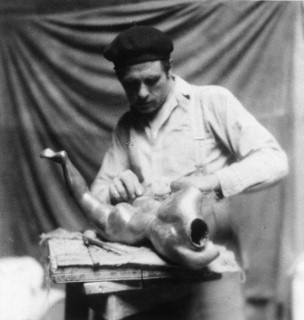
George Claude Leon Underwood was a British artist, although primarily known as a sculptor, printmaker and painter, he was also an influential teacher and promotor of African art. His travels in Mexico and West Africa had a substantial influence on his art, particularly on the representation of the human figure in his sculptures and paintings. Underwood is best known for his sculptures cast in bronze, carvings in marble, stone and wood and his drawings. His lifetime's work includes a wide range of media and activities, with an expressive and technical mastery. Underwood did not hold modernism and abstraction in art in high regard and this led to critics often ignoring his work until the 1960s when he came to be viewed as an important figure in the development of modern sculpture in Britain.
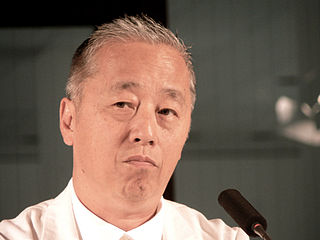
Hiroshi Sugimoto is a Japanese photographer and architect. He leads the Tokyo-based architectural firm New Material Research Laboratory.

Edwin Parker "Cy" Twombly Jr. was an American painter, sculptor and photographer.

John Currin is an American painter based in New York City. He is most recognised for his technically proficient satirical figurative paintings that explore controversial sexual and societal topics. His work shows a wide range of influences, including sources as diverse as the Renaissance, popular culture magazines, and contemporary fashion models. He often distorts or exaggerates the erotic forms of the female body, and has stressed that his characters are reflections of himself rather than inspired by real people.
Martin Kippenberger was a German artist known for his extremely prolific output in a wide range of styles and media, superfiction as well as his provocative, jocular and hard-drinking public persona.
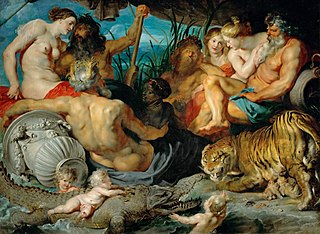
A work of art, artwork, art piece, piece of art or art object is an artistic creation of aesthetic value. Except for "work of art", which may be used of any work regarded as art in its widest sense, including works from literature and music, these terms apply principally to tangible, physical forms of visual art:

Lucio Fontana was an Argentine-Italian painter, sculptor and theorist. He's known as the founder of Spatialism and exponent of abstract painting as the first known artist to slash his canvases - which symbolizes an utter rejection of all prerequisites of art.
Julian Opie is a visual artist of the New British Sculpture movement.
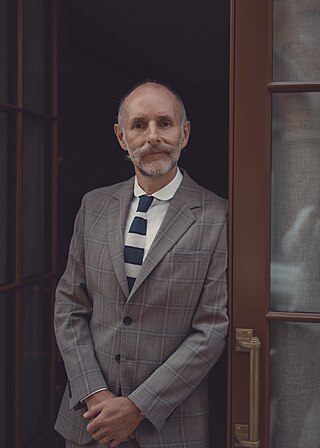
Glenn Brown is a British contemporary artist known for the use of appropriation in his paintings. Starting with reproductions from other artists' works, Glenn Brown transforms the appropriated image by changing its colour, position, orientation, height and width relationship, mood and/or size. Despite these changes, he has occasionally been accused of plagiarism.
Larry Bell is an American contemporary artist and sculptor. He is best known for his glass boxes and large-scaled illusionistic sculptures. He is a grant recipient from, among others, the National Endowment for the Arts and the Guggenheim Foundation, and his artworks are found in the collections of many major cultural institutions. He lives and works in Taos, New Mexico, and maintains a studio in Venice, California.

An Oak Tree is a conceptual work of art created by Michael Craig-Martin in 1973. The piece, described as an oak tree, is installed in two units – a pristine installation of a glass of water on a glass shelf on metal brackets 253 centimetres above the ground, and a text mounted on the wall. When first exhibited, the text was given as a handout.

Franz West was an Austrian artist.
Richard Ernst Artschwager was an American painter, illustrator and sculptor. His work has associations with Pop Art, Conceptual art and Minimalism.
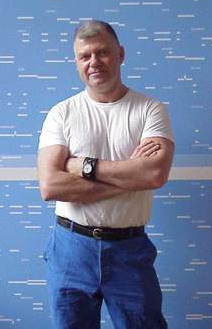
Keith Milow is a British artist. He grew up in Baldock, Hertfordshire, and lived in New York City (1980–2002) and Amsterdam (2002–2014), now lives in London. He is an abstract sculptor, painter and printmaker. His work has been characterised as architectural, monumental, procedural, enigmatic and poetical.
Robert Adams was an English sculptor and designer. Whilst not widely known outside of artistic circles, he was nonetheless regarded as one of the foremost sculptors of his generation. In a critical review of a retrospective mounted by the Gimpel Fils gallery in London in 1993, Brian Glasser of Time Out magazine described Adams as "the neglected genius of post-war British sculpture", a sentiment echoed by Tim Hilton in the Sunday Independent, who ranked Adams' work above that of his contemporaries, Ken Armitage, Reg Butler, Lynn Chadwick and Bernard Meadows.
Kris Martin is a Belgian conceptual visual artist. His work consists of monumental and small-scale sculptures, drawings and interventions.
Michael Clark is a contemporary British artist. His work spans a broad range of media including painting, drawing, sculpture, film, photography, installation, video, performance and artist's books. Clark was born in Manchester and lives and works in London.
